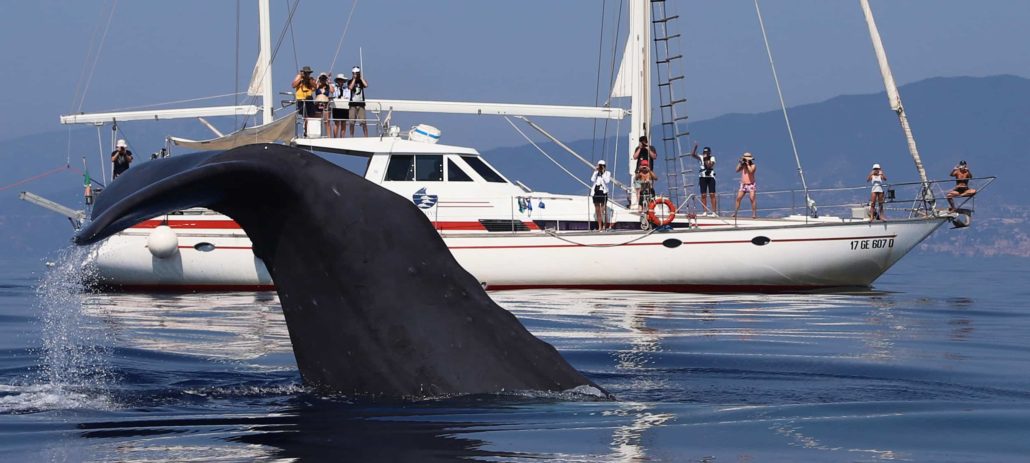Cetaceans Sanctuary Research: 30 years for the cetaceans in the Mediterranean
The year of the pandemic
The 31st year, 2020, brings the Covid-19 emergency which, for a few months “freezes” all human activities. For researchers, it is an opportunity that could help understand how to protect not only animals but the entire marine environment.
What effects will an anomalous year like this have on cetaceans? Will there be differences in their distribution, abundance, habitat use, behavior?
It may be a complicated and difficult year, but it will be dedicated, as always, to the protection of marine mammals, to the environment, and to our common future.
Tethys’ long term project, which has always been supported by citizen science, has just celebrated its 30th anniversary. It yields one of the longest scientific data series in the Mediterranean, and looks at the Covid-19 pandemic as a possible opportunity of knowledge.
Surely 2020 will be remembered as a peculiar year, and not only because a virus is keeping the whole world in check. Many things probably changed at sea at the time of the lockdown, with reduced maritime traffic, especially near the coasts. It is a very special year indeed for the Cetacean Sanctuary Research (CSR) (one of the two long-term projects of the Tethys Research Institute) which celebrates 30 years of activity. Those were precious years for the knowledge of whales and dolphins of the Mediterranean.
The changing Sanctuary
The CSR carries out research in the Pelagos Sanctuary, the largest marine protected area in the Mediterranean, and has a real record to its name: three decades that have led to the most conspicuous amount of scientific data collected in this area, with a unique effort, covering roughly the equivalent of six times the circumference of the earth. The result is a sort of all-round picture of this extraordinary environment. Actually it is not just a simple snapshot, but the testimony of the evolution of an ecosystem over an unprecedented period of time.
Today the picture has changed compared to the beginning, and so has the distribution of several species and their use of the Sanctuary. At sea, borders are in constant movement and the presence of fin whales is equally fluid conditioned by complex oceanographic dynamics. Something has changed between the sperm whales that are now sighted over a longer timespan, while the Risso’s dolphins, which used to be spotted in front of the western Ligurian coast and the French Riviera, have apparently disappeared from that area around 5 years ago.
We have learned that Mediterranean cetaceans are genetically different from those of the Atlantic. This means that they are all the more precious and we cannot afford to lose them. The Sanctuary is a strategic place: it is not only important in itself, but for the entire Mediterranean. It is a precious summer feeding ground for both male sperm whales and for fin whales. In fact, the Sanctuary could host a significant portion of the populations of large cetaceans of the Mediterranean. These are all hypotheses that researchers can only test with continuous and long-term programs such as CSR.
Continuity is also the key to understanding the essence of the Sanctuary: an environment in constant transformation. The impact of humans has also changed and is increasing more and more: accidental bycatches in nets, organochlorine contaminants, collisions with ships, noise pollution, macro and micro-plastics, habitat loss, overfishing. What’s the worst? Probably a mix of several factors, in alarming increase and also in swift transformation. Coping with all this requires complex management measures, targeted but flexible over time and an unprecedented effort.









